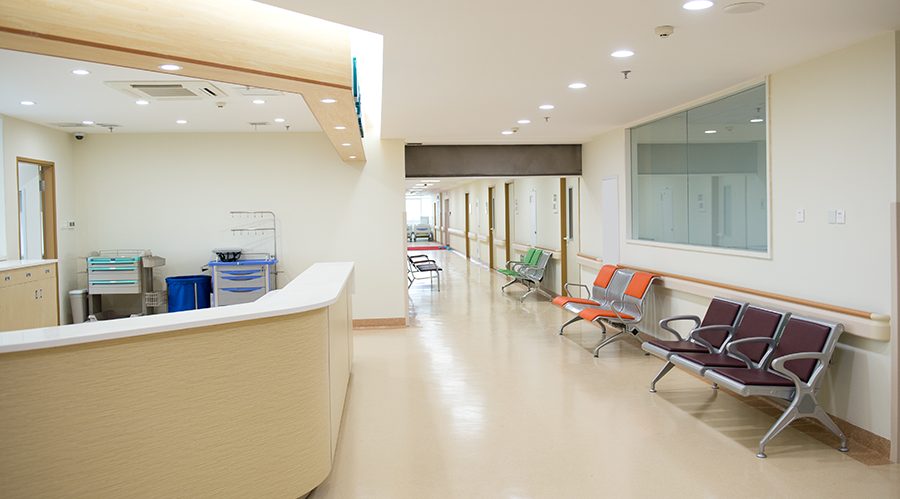It’s no secret that trends come in and out of style. However, some trends are here to stay when it involves improving a facility for the better. No industry knows this better than healthcare. Over the years, healthcare facilities managers and designers have kept an ear to the floor to determine the best to upgrade buildings for patients, visitors and staff. Healthcare Facilities Today recently spoke with Matthew Griffith, Vice President, Director of Healthcare at Barge Design Solutions about how designers and engineers are addressing the need for flexibility and adaptability by creating healthcare facilities that can accommodate the changing healthcare landscape.
HFT: Are there any emerging trends in modular or prefabricated construction methods that are being applied to healthcare facilities to expedite construction and reduce costs?
Matthew Griffith: As owners are increasingly challenged to contain costs for new facility construction they have been turning more to the use of modular and pre-fabrication in the development of facilities. Serial builders with robust capital building plans find that prefabrication of repeatable elements creates a reliable construction flow, reducing overall development schedules and allowing facilities to open for business sooner. Items such as toilet rooms, patient room headwalls, footwalls, utility racks, operating rooms, and exterior wall panels are commonplace in today’s healthcare market. Prefabrication also allows greater predictability in quality and craftsmanship, as well as helping address on-site construction trade labor shortages.
HFT: How are designers and engineers addressing the need for flexibility and adaptability in healthcare facility design, given the ever-changing healthcare landscape?
Griffith: Flexibility and adaptability in healthcare design has long been an overarching goal for designers. By carefully listening to clients' needs and responding with flexible solutions, designers have been instrumental in creating facilities that can address current challenges. Whether designing emergency departments that accommodate census fluctuations with thoughtful nursing support, or MedSurg beds that can flex to an ICU level of acuity to meet the needs of seasonal or episodic events, designers need to be attuned to the specific client needs to respond appropriately.
HFT: In terms of accessibility and inclusivity, what design features are being integrated into healthcare facilities to ensure they are welcoming and usable for all individuals, including those with disabilities?
Griffith: HealthCare facilities must be designed to meet the needs of a very diverse patient, visitor, and provider population. The challenge for designers is to create spaces that do so in a seamless and dignified way. Barrier-free design, in terms of accessibility, has been a legal requirement for some time. The goal is to create an environment where accessibility is seamless and imperceptible. From the provider's perspective, offering features that safely and respectfully assist patients of larger size is another example of current design considerations.
HFT: Are there any design trends or innovations specifically aimed at enhancing staff well-being, reducing burnout, and improving overall working conditions in healthcare facilities?
Griffith: Staff attraction and retention pose significant challenges in the healthcare market sector. Owners are addressing this through various means, and there is considerable focus on designing features in the built environment to alleviate provider stress and burnout. Recent design examples include features that reduce travel distances, offer spaces for off-stage collaboration, and provide areas for off-stage respite with natural daylight and nature views.
HFT: Are there any emerging technologies or design concepts that you believe will have a significant impact on healthcare facility design in the near future?
Griffith: Emerging technologies in healthcare worth noting include the growing use of robots within healthcare facilities. Apart from highly sophisticated surgical robots, some facilities are deploying robots for tasks such as food service delivery, handling linens, managing supplies, and distributing medications. From a design perspective, this entails incorporating provisions for storage, charging, maintenance, and secure placement of these devices to ensure they do not hinder life safety operations during building emergencies.
Mackenna Moralez is the associate editor for the facilities market.

 UF Health Hospitals Rely on Green Globes to Realize Their Full Potential
UF Health Hospitals Rely on Green Globes to Realize Their Full Potential How Healthcare Facilities Can Be Truly Disaster-Resilient
How Healthcare Facilities Can Be Truly Disaster-Resilient TriasMD Breaks Ground on DISC Surgery Center for San Fernando Valley
TriasMD Breaks Ground on DISC Surgery Center for San Fernando Valley Bigfork Valley Hospital Falls Victim to Data Breach
Bigfork Valley Hospital Falls Victim to Data Breach AI-Driven Facilities: Strategic Planning and Cost Management
AI-Driven Facilities: Strategic Planning and Cost Management